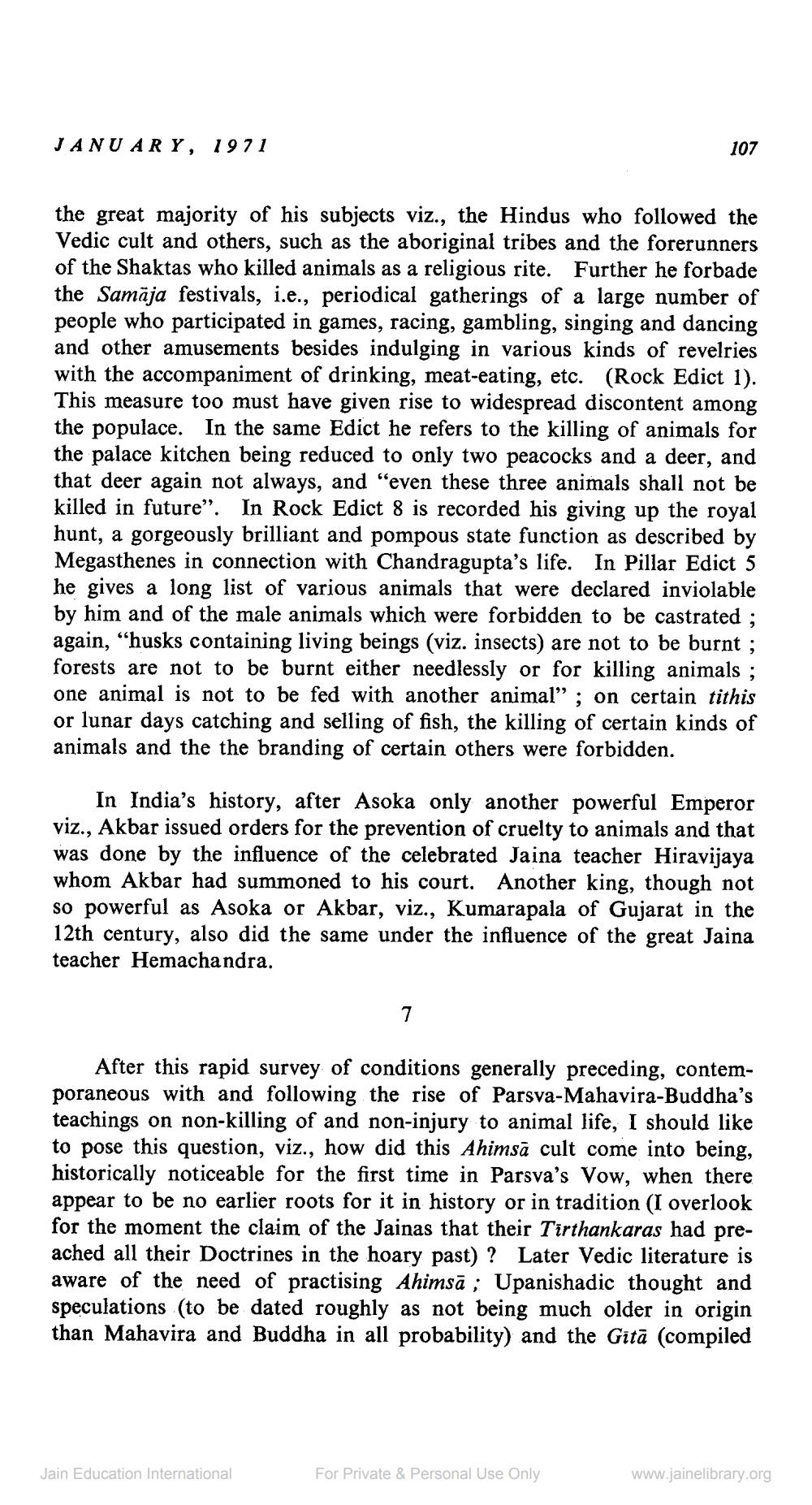________________
JANUARY, 1971
the great majority of his subjects viz., the Hindus who followed the Vedic cult and others, such as the aboriginal tribes and the forerunners of the Shaktas who killed animals as a religious rite. Further he forbade the Samaja festivals, i.e., periodical gatherings of a large number of people who participated in games, racing, gambling, singing and dancing and other amusements besides indulging in various kinds of revelries with the accompaniment of drinking, meat-eating, etc. (Rock Edict 1). This measure too must have given rise to widespread discontent among the populace. In the same Edict he refers to the killing of animals for the palace kitchen being reduced to only two peacocks and a deer, and that deer again not always, and "even these three animals shall not be killed in future". In Rock Edict 8 is recorded his giving up the royal hunt, a gorgeously brilliant and pompous state function as described by Megasthenes in connection with Chandragupta's life. In Pillar Edict 5 he gives a long list of various animals that were declared inviolable by him and of the male animals which were forbidden to be castrated ; again, "husks containing living beings (viz. insects) are not to be burnt; forests are not to be burnt either needlessly or for killing animals; one animal is not to be fed with another animal"; on certain tithis or lunar days catching and selling of fish, the killing of certain kinds of animals and the the branding of certain others were forbidden.
In India's history, after Asoka only another powerful Emperor viz., Akbar issued orders for the prevention of cruelty to animals and that was done by the influence of the celebrated Jaina teacher Hiravijaya whom Akbar had summoned to his court. Another king, though not so powerful as Asoka or Akbar, viz., Kumarapala of Gujarat in the 12th century, also did the same under the influence of the great Jaina teacher Hemachandra.
107
7
Jain Education International
After this rapid survey of conditions generally preceding, contemporaneous with and following the rise of Parsva-Mahavira-Buddha's teachings on non-killing of and non-injury to animal life, I should like to pose this question, viz., how did this Ahimsa cult come into being, historically noticeable for the first time in Parsva's Vow, when there appear to be no earlier roots for it in history or in tradition (I overlook for the moment the claim of the Jainas that their Tirthankaras had preached all their Doctrines in the hoary past) ? Later Vedic literature is aware of the need of practising Ahimsa; Upanishadic thought and speculations (to be dated roughly as not being much older in origin than Mahavira and Buddha in all probability) and the Gita (compiled
For Private & Personal Use Only
www.jainelibrary.org




